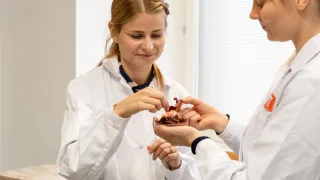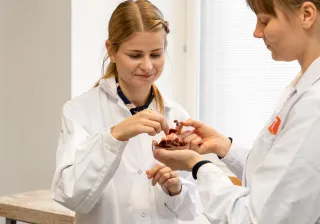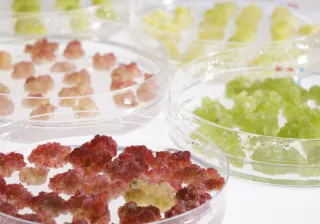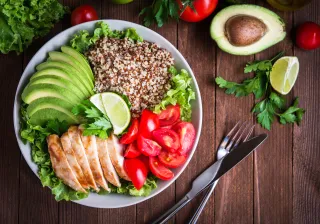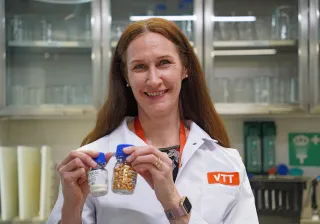At the very moment, when we are frantically, almost-desperately exploring viable solutions for alternative protein and food sector, the Hybrid Foods concept is entering to the next ambition level.
The food system transformation based on the anticipated plant-, cellular agriculture- and fermentation-based solutions is falling behind what is necessary to enable the dietary shift towards less animal product consumption and subsequent environmental benefits.
Harnessing industrial biotechnology for food production, could fill the gap in developing tasty and nutritious food, but the technologies are still facing scalability and cost challenges and require integration with the existing food production systems and society.
Plant-based production and processing technologies are closer in meeting the price parity with meat, but the food products have sensory and nutritional deficiencies.
In their current state, it is justified to claim that neither of them, plant-based or biotech solutions alone can make the food system transition within the timeframe set to reach the sustainability goals.
Can Hybrid Foods be the catalyzer for the required development and provide keys for the needed transition?
Hybrid Food concept means combining food ingredients from diversified sources, such as animals, plants, cellular agriculture and fermentation, in an innovative way to produce high quality foods (Figure 1). Hybrid Food can simply mean combining animal origin ingredients with plant-based materials. As such it is not a novel concept, and already widely used by the food industry. In future, a stepwise reduction of meat-consumption by hybrid, still meat-containing food products would presumably be an easy choice for both industry and consumers.
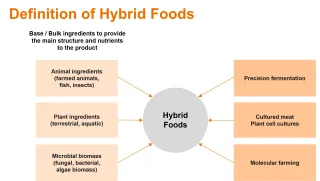
Figure 1. Hybrid Food means combining animal-, plant-, cellular agriculture- and fermentation-based ingredients for manufacturing of superior quality food products that meet the prize parity and consumer expectations when comparing to meat- and other animal-based products.
In this next wave of Hybrid Foods the goal is to produce superior quality food products that meet the prize parity and consumer expectations when producing alternatives to meat and dairy products. One key area is to combine plant-based bulk or base raw materials with novel high performing ingredients produced by cellular agriculture and fermentation to generate food products that stand out and end up in consumer’s shopping cart.
Hybrid Foods provides a feasible approach to novel food ingredients to enter the market despite the scalability challenges. Thereby, instead of providing staple foods, cellular agriculture and fermentation -based ingredients will first be integrated in Hybrid Foods as high value compounds, which enables development of the business ecosystem and building infrastructure.
Not to forget the pending societal acceptance - by this stepwise approach based on Hybrid Foods citizens and stakeholders are also able to familiarize themselves with the novel ingredients and production concepts and start adapting and building the required societal structures.
Achieving better sensory quality in plant-based products
One descriptive example of hybrid concept is applying microbially produced lipids in the plant-based meat or dairy products. Producing either meat or dairy lipids by yeast and then combining the extracted lipids with plant-based proteins and other ingredients can provide the sensory quality consumers are seeking for. Similarly, supplementation with iron-binding proteins is relevant to plant-based meat substitutes. Dietary studies have shown that switching to plant-based diets can result in micronutrient, for example iron deficiency, and thus, mitigation actions are required. Plant-based meats will also be better accepted by customers if the product has an appealing colour that changes appropriately during cooking or frying. Precision fermentation may be used to produce proteins that form colour and/or bind iron, providing appropriate sensory and nutritional quality to meat substitutes.
Hybrid Foods introduce also many novel approaches, for example, combining plant-based scaffolds, microbially produced lipids with cultured meat ingredients. Or combining colourful plant cell cultures with mycoprotein ingredients and lipid rich microbial biomass.
The role of Hybrid Foods in reaching environmental goals
Only the sky is the limit, but, in the end Hybrid Foods can emerge also from novel food production concepts.
For example, integrating a greenhouse that produces soybean with a fermentation facility that produces protein by precision or biomass fermentation can decouple food production from massive land use. Besides the greenhouse providing the soybean seeds for direct food use, the soy plant leaves, stems and pods can be processed to be used as feedstock in fermentation for microbial protein production.
Moreover, the residual microbial biomass (in the case of precision fermentation), CO2 and sewage from the cell factory could be circulated back to the greenhouse where they could be used as inputs (Figure 2). To illustrate the scale of this kind of integrated Food without Fields production concept, greenhouse area of 470 ha and 10 bioreactors of 300 m2 has been estimated to produce in total 12 000 t/y plant and microbial protein, corresponding to 10% of the animal protein consumed in Finland.
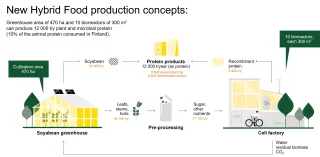
Figure 2. New Hybrid Food production concept: Greenhouse area of 470 ha and 10 bioreactors of 300 m2 can produce 12 000 t/y plant and microbial protein (meaning 10% of the animal protein consumed in Finland). Source: Food without Fields project (2021-2024), funded by Catch the Carbon program of the Ministry of Agriculture and Forestry of Finland
As crop production is increasingly threatened by the climate change as the arable land is decreasing and climate conditions cause challenges for high quality harvests, the crop production in greenhouses can provide viable option to improve food production resiliency.
Hybrid Foods concept enable the food system actors to reach the environmental goals faster. It can help the new start-ups with their business development and market uptake, but also generates new innovations. In the end, Hybrid Foods concept is about diversification of our food sources (Figure 3). By diversifying what we produce and eat, we cannot only reinforce our food systems but also align with the goals for a healthier, more sustainable, resilient, and equitable food system with minimized environmental consequences.
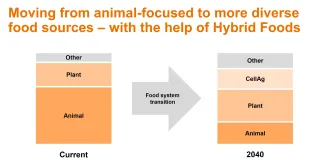
Figure 3. Moving from animal-focused to more diverse food sources – with the help of Hybrid Foods

